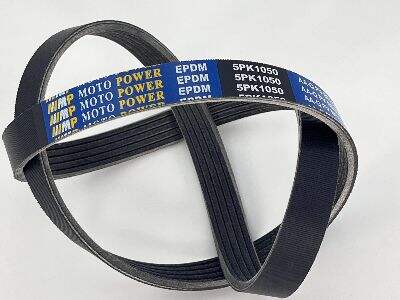Basic to understanding the difference between classical and cogged V-belts.
Classical V-belts/Cogged V-belts are plain or toothed on one side. These teeth allow the rubber belt to grip into a pulley more effectively and prevent the belt from slipping. This distinction is the result of the greater ability of cogged V-belts to transfer power from the engine to other systems within the machine. Classical V-belts are less tensile and are suitable for less than heavy-duty applications.
Efficiency and power losses analysis of classical and cogged V-belts under different applications.
Cogged v belt rubber more efficient. Moreover, they can run faster and bear heavier loads due to their tooth configuration compared to classical V-belts. This, in turn, makes them very well-suited for machines which require a significant amount of power to be in use, such as large engines or industrial equipment. Classical V-belts are better if your machine is smaller, and does not require as much energy.
How cogged V-belts reduce noise and vibration versus classical V-belts.
One of cogged V-belt’s greatest benefits is they run quieter with less vibration than classical V-belts. Cogged V-Belts These V-belts have teeth that let them operate more smoothly and with less slippage than V-belts. Classical V-belts, however, may become noisy or cause the associated equipment to shake or vibrate. That can be annoying for people who work near it, and it may even damage the machine over time.
Classical V-belts are also significantly more flexible than their counterparts. This make them ideal for non-standard machines or machines with limited space. Cogged V-belts are also more stable and live longer than timeworn V-belts. This is due to the fact that the teeth found on cogged V-belts helps to spread out stress so that it is not as concentrated in one area and therefore will not wear down over time.
Comparing the maintenance and cost differences of classical v-belts versus cogged v-belts in your plant or application.
When it comes to upkeep, classical V timing belt rubber are straightforward to replace and install in comparison to cogged belts. This can potentially save businesses time and money in the end. Cogged V-belts last longer than other types and need to be replaced less often, however, which may cut costs in the long run. It’s crucial for companies to take these Ill-effects into account when choosing the appropriate V-belt to be incorporated into their machines.
Table of Contents
- Basic to understanding the difference between classical and cogged V-belts.
- Efficiency and power losses analysis of classical and cogged V-belts under different applications.
- How cogged V-belts reduce noise and vibration versus classical V-belts.
- Comparing the maintenance and cost differences of classical v-belts versus cogged v-belts in your plant or application.

